On that day, the shelling did not leave her family in peace, as Aya thought. Gas stealthily slipped into her cavity and killed her embryo while she searched for a shelter to hide herself and her son from a contradictive death, violent but does not leave blood on its victims, light but suffocating.
On that day, that contradictive death stole the air from the chests of the people in the town of Khan Shaykhun and replaced it with poison.
“I inhaled the poisonous gas, but I did not know that I was affected just like everybody else,” said she.
Aya Fadel describes the moments after the Syrian regime planes attacked the town of Khan Shaykhun with poisonous gases last April.
“We headed to my sister-in-law’s house, to check up on her. There, we found them collecting the bodies of martyrs who died in the shelling in one of her house’s rooms. The room was small and cramped which congested the poisonous gas,” said Aya, who only then started to show the symptoms of gas poisoning.
Aya gathers enough force to describe the road from Khan Shaykhun to Jabal Zawiya, where she was given medical aid. She speeds to reach the moment when she lost consciousness, to surrender to a short silence, a threshold between the shock and grasping it.
Aya lost her baby, embryo, who joined other 100 victims of shelling.
The catastrophe did not stop at this point. The recurrent scenario of chemical attacks in Syria manifested itself in a deep anxiety for the future.
That futuristic fear deeply relates to children and embryos, corresponding to the increasing number of deformed embryos and newborns and the rise in the ratios of abortion.
Ikram Habboush, an obstetrician from Idlib, said that the percentage of fetal deformities has increased among Syrian women since the beginning of the war in Syria. From 1 to 2 percent, cases of deformation leaped to 7 or 8 percent, among the pregnant women who visit her clinic.
Habboush does not assert the role of poison gas attacks on Idlib in causing fetal deformities and abnormalities, but she confirms that the effect of these attacks will have a futuristic influence in increasing deformities and cancers in general.
While 8 percent is supposed to be a trigger for real concerns, medical committees are not showing the intention to approach the matter as a phenomenon. They tackle the case with doubt because it is difficult to implement such approaches and there is not a definite time span through which they can gather evidence of all the possible effects of the attacks.
Enab Baladi sought to detect the phenomenon and Eastern Ghouta, four years after the famous chemical massacre, was the target. The people there had a different opinion from that of the doctors: While local sources confirmed to Enab Baladi that miscarriages and fetal deformities increased after the chemical attacks on 21 August 2012, most of the involved obstetricians and pediatrics avoided calling the situation as a phenomenon.
Mrs. Khawla, who is in charge of the library of ‘Bait al-Hikma’ (Wisdom House) in Eastern Ghouta, told Enab Baladi that one of the region’s women miraculously managed to survive the chemical attack. However, since then she had repeatedly miscarried, and the only baby, who survived death in her womb, was born with a heart defect and soon died.
‘Dar Al-Rahma Center for Cancer’ (The Home of Mercy for Cancer), specialized in treating blood and cancer patients in Ghouta, also confirms the link between the chemical attacks and children getting cancer, stressing the attacks’ role in causing strange fetal deformities.
Nevertheless, Ahmed Abdelghani, an obstetrician, who works at a medical center in Ghouta, told Enab Baladi that most of the deformities he comes across are familiar, refusing to confirm that they might be related to exposure to toxic gases.
Even though doctors refuse to attribute the cases of deformation to the chemical attacks due to scarce resources or because the phenomenon itself does not exist, their efforts concerning the issue would have given people a glimmer of hope or a space to minimize Idlib and Ghouta’s people fear of the futuristic effects of the chemical attacks.
Hope can also help Aya overcome the influence of that day which changed her life and can eliminate her husband’s worries and fears of a possible repetition of that doomed day.
A new baby in her womb helps Aya keep going on.
Between Observation and the Difficulty of Proof
A Silent Prevalence of Abortion and Fetal Deformities
Syrians today prepare themselves to run another battle, a battle of survival. After seven years of war, a war that has not yet reached a halt, they gather force to face pain and the fatal effects of armed conflict, which they might need dozens of years to overcome.
Dealing with them as a daily routine, the direct effects of war are present in the life of all the segments of the Syrian society for war has not spared anyone, even pregnant women.
Relying on weapons admits no limits in Syria; it breaks all the humanitarian taboos reaching the point of using toxic gases. It was difficult to anticipate the effects of chemical weapons on Syrian people when the attacks took place, and it was not until they became recurrent that people started to pay attention to them. These poisons left their traces in women and the embryos they carried.
The Prevailing Phenomenon Unofficially Documented
International and local health organizations could not provide official statistics to prove the effects of the used chemical weapons on people, recurrent miscarriages and fetal deformities on a precise term. Most of the regions exposed to chemical attacks are besieged by the Syrian Regime or under the control of opposition factions, which complicated the situation and made it difficult to study the phenomenon closely.
Damascus’ Eastern Ghouta is the most suitable environment to study and decide the extent to which chemical weapons have affected the health of pregnant women and their embryos. In August 2013, Ghouta was subject to shelling by the nerve gas ‘Sarin,’ described as the most violent weapon used in the Syrian conflict. However, the siege on the region hinders conducting official examinations and studies.
The attack on the town of Khan Shaykhun, in April 2017, is somehow recent; therefore, it would take two years at least to study the impact of the chemical attack and to validate the hypothesis.
However, the observations of some doctors proved that the rise in the rates of abortion and fetal deformities, in Eastern Ghouta and Khan Shaykhun, is significant in comparison to the years before 2011.
Doctors Observe Unprecedented Deformities
Enab Baladi interviewed doctors from Idlib and Ghouta to understand the phenomenon. Dr. Ikram Habboush commented on the issue and mentioned that the phenomenon has been increasingly prevailing in the past a few years.
Dr. Habboush said that she noticed that the number of babies born with birth defects increased by 8 percent if compared to the last year, when it was only 2 percent in her clinic in Idlib.
However, what surprised the doctor is the birth of babies with new and strange types of deformities, which come in the form of tumors in different parts of their bodies.
“In the future, [the effects of chemical weapons] might appear as cancer and new types of fetal deformities, which lead to frequent miscarriages,” said she.
Dr. Mohammad Raed al-Hamdu said that “Most of the pregnant women in the town of Khan Shaykhun had a miscarriage after the attack on the town.”
To Enab Baladi he said that “[Birth defects] did not start to appear because the duration after the massacre is not enough to detect them, especially that pregnant women have had a miscarriage, and those who got pregnant after the massacre have not yet given birth.”
Al-Hamdu anticipates serious deformities and the prevalence of cancer in time.
In Ghouta, doctors do not think that chemical weapons have long-term effects on pregnant women, and Dr. Walid Awatta did not hide that there are a few cases of abortion and fetal deformations, but “these cases did not exceed the usual limit.”
Awatta, an obstetrician at Zamaleka Hospital in Eastern Ghouta, said that most of the strange and frequent cases are the aspiration of amniotic fluid in newborns, which is usually associated with neurological abnormalities.
To Enab Baladi, he said, the regular thing that keeps showing in Ghouta is babies born without complete skulls and large encephalomeningocele, because of which the baby’s head appears similar to that of a frog.
No official body has yet been able to prove the effects of the chemical weapons on pregnant women and embryos, according to Dr. Awatta.
Regions of the Syrian Regime under the Microscope
Although it has not been subject to chemical shelling, Damascus has witnessed a marked increase in abortion rates, fetal deformities and birth defects, for several reasons not limited to chemical influence.
However, the chemical attack on Eastern Ghouta, which is approximately close to the center of the capital, is likely to have an indirect effect on the pregnant women in the regions around Ghouta, for chemical weapons’ can affect crops, water and air.
Dr. Nawar Faroun, The Head of the Pediatric Department at University Maternity Hospital of Damascus, told the local newspaper ‘Al-Watan’ last July that the percentage of deaths due to child defects during the year 2016 reached 7.7 percent, compared to 3.5 percent in the previous year.
The rate of death due to premature birth in 2015 reached 32 percent and rose in 2016 to 57.5 percent.
According to Dr. Faroun, these statistics do not reflect the ratios of fetal deformities, as many of them die in the early stages of pregnancy due to miscarriage that also increased.
The statistics of the University Maternity Hospital of Damascus show that the number of the recorded cases with deformities, in the maternity ward, has increased in 2016 to 23 cases.
The Damascus University Children’s Hospital has recorded about 6430 cases of birth defects between 2011 and 2016, which doctors have attributed to varying reasons.
The University Hospital of Cardiology and Cardiac Surgery in Damascus reported a marked increase in the percentage of congenital heart defects in Syrian children.
In an interview with the local newspaper ‘al-Watan’ last June, Hossam Kheder, the head of the hospital, said that 1 percent of newborns in Syria has undergone a heart surgery.
The Syrian Regime’s Government, which has repeatedly denied using internationally banned weapons, does not admit that chemical weapons are actually playing a role in increasing the rates mentioned above. However, toxic gases remain among the main medical factors causing miscarriages and fetal deformities.
How Do Chemical Weapons Affect the Pregnant Women and Her Embryo?
From the perspective of Syrian doctors, the effects of the chemical weapons used in the attacks on the town of Khan Shaykhun and Ghouta cannot be estimated for they are new to Syrians.
Dr. Mohammad Raed Al-Hamdu said that “The effects of chemical weapons can be measured in comparison to the effects resulting from smoking. The slight amount of chemicals in cigarettes causes cancer, so [imagine the effect of a chemical weapon]?”
Speaking about the effects of chemical weapons in general, he said that infertility in men and women, as well as breast and uterine cancer, are regarded as the most dangerous effects.
As for chemical weapons’ effect on embryos, the deformities appear in two stages. In the first stage, immediately after birth, deformities appear as birth defects. The baby might have an extra organ or lack one and might develop cardiac, chest and psychological diseases.
In the second stage, a while after the child is born, deformities start to appear as malignant tumors, growth delays, brain atrophy and poor memory, which can accompany the child for a long time.
Scientifically, chemical-based fetal deformities are due to the chemical influence of what is known as teratogenicity, a change in the growth of the living being and its organs due to external effects such as toxins, radiation, and chemicals.
If chemical substances enter the womb in the first ten weeks of pregnancy, they cause defects in the formation of the fetus’ organs.
However, defects in the fetus’ nervous system occur when the chemical substances affect the mother in the later months of pregnancy, in which the organs of the fetus would have been already formed except for the brain, which continues to form even after birth.
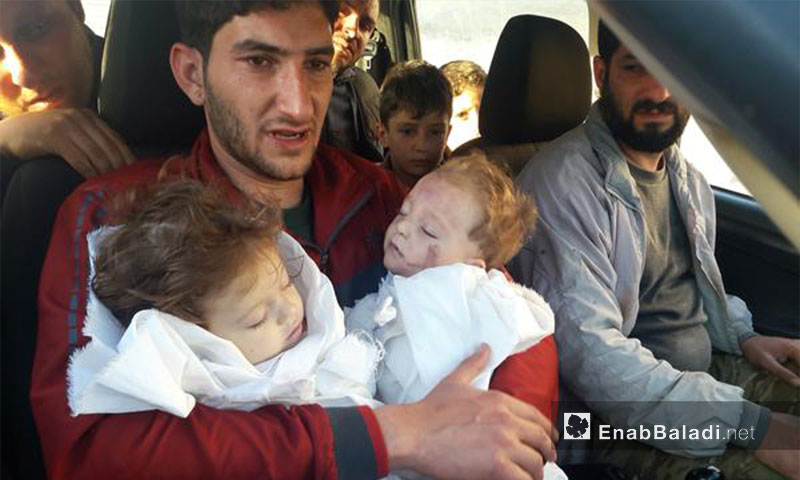
A survivor who lost all his family members in the chemical attack on the town of Khan Shaykhun in rural Idlib – April 2017 (Enab Baladi Archive)
It Is a Sin, But ….
What is the Islamic Ruling on Aborting a Deformed Fetus?
For a long time now, obstetric ultrasound scans and devices have helped detect fetal deformities and health issues in embryos. However, with this ability a number of questions erupted, especially in matters relating to religion and to Islamic Shareeah. The most controversial of these questions were the following: Upon detecting fetal deformities can pregnant women have an abortion? Moreover, what is the Islamic ruling in that case?
Most of the opinions of the Fiqh Islamic law say that it is allowed to abort an embryo before it is 40 days old, for the soul would not have been blown into it yet. There are other opinions which prohibit abortion even in the first month of pregnancy, which, the spokesperson of the Syrian Islamic Council, Ahmad Hawwa agrees to.
In Islam, people tend to believe that before it is 40 days old, the embryo has only a body but not a soul. After 40 days, Rooh, ‘soul,’ is blown into it.
According to Hawwa, the only reason to allow abortion is the fear for the life of the mother. “That fear must be based on a medical committee’s report not the opinion of a single male or female doctor, since these individual estimates may be wrong. Unless there is a deformity or similar factors, the soul [of the embryo] is sanctioned and it is haram, ‘prohibited,’ to abort it.”
According to Hawwa, abortion is not allowed even if pregnancy is still in its first days. This opinion is based on the religious texts that sanctioned the soul forming in the mother’s womb.
“There is no difference between aborting an embryo before the soul is blown into it or after it has been blown, as we do not have any evidence about the permissibility of aborting an embryo before the soul is blown into it or that it is only haram after the soul is blown into it, the two cases are alike and both are haram.”
At its 12th session in 2012, the Islamic Fiqh Council of Muslim World League declared that an abortion is allowed if the embryo is proved as having a deformity. The deformity must be diagnosed as severe and a committee of specialized doctors must make the decision.
The Council of Senior Scholars in the Kingdom of Saudi Arabia says: “If the pregnancy is in the first stage, the 40 days stage, and if aborting it is for a legitimate interest or to prevent an expected harm, [the embryo] can be aborted. However, if abortion is done in this period fearing the difficulties of bringing children up or the inability to provide for them or educate them, worrying about their future, or because the parents are satisfied with the children they already have, abortion is prohibited.”
The Syrian Regime and Internationally Forbidden Weapons
For dozens of times, the Syrian regime has been convicted of using internationally forbidden weapons against civilians in the opposition-held regions. The most prominent of these attacks was the shelling of Eastern Ghouta in August 2013, which resulted in 1,400 victims, mostly children and women. Since then, the Syrian regime repeated the attacks on different Syrian regions, such as Khan Shaykhun, Saraqib and others.
Human rights reports are often cautious in determining the type of weapons used in the shelling, especially the chemical ones because their precise identification requires the presence of observers on the ground who take samples of the land, buildings and biopsy of the people in the targeted region.
However, medical reports and symptoms on civilians were an important factor in asserting that the internationally forbidden sarin and chlorine gases were the most widely used substances, as well as the napalm, and cluster bombs that Russia admitted using in attacks on opposition-held regions, such as the regions under the Islamic State organization (IS).
Sarin Gas
The sarin gas belongs to the G-series of nerve gases discovered by German scientists between 1936 and 1949. The US military was the first to include this gas into its arsenal of nuclear weapons since the middle of the last century.
Sarin is known to be highly toxic, with no color or odor. Half a milliliter is enough to be a lethal dose. Symptoms begin with paralysis of the respiratory system, loss of consciousness and death within about 1.5 minutes of the attack. Sarin gas attacks the points which connect nerve cells, which stops the connection between nerves and muscles.
One of the direct effects of a pregnant women’s inhalation of sarin gas is abortion due to lack of oxygen concentration in her blood, which suffocates the embryo. Sarin gas inhalation can also lead to different fetal deformities.
According to the report of the United Nations Commission on Investigation of Chemical Weapons in Syria, the Syrian regime used Sarin more than once, including the attack on the city of Khan Shaykhun last April, which killed about 100 civilians.
Chlorine Gas
Chlorine gas is a chemical substance known as C.I, which is known for being highly poisonous and a strong oxidant factor. If used at high concentrations, chlorine gas can become lethal, and if used in low doses, it can cause damage to the lungs or breathing difficulties and other symptoms including vomiting and nausea.
Long-term effects of exposure to high concentrations of chlorine are carcinogenic and can pose a risk to pregnant women and the embryo.
The Syrian regime used chlorine gas to attack several Syrian regions, as indicated by several UN reports. In March 2015, the UN Security Council adopted a resolution condemning the use of chlorine gas in Syria.
Napalm
Napalm is a flammable gelatinous liquid substance that sticks to the skin. It is made by adding shavings of oil soap to indirectly heated benzene. When napalm reaches the skin, it causes fourth and fifth degree burns.
The United States developed Napalm during the Second World War and used it in the shelling of the German city of Dresden in 1945, causing the death of 25 to 40 thousand civilians. The United States also used it during the Vietnam War (1961-70), killing thousands.
This weapon causes severe burns in the injured body, which can lead to death or serious deformities.
The use of napalm in Syria was first documented in 2012, targeting the towns and villages of Aleppo’s countryside and the city of Darayya in the countryside of Damascus. According to media reports, the Syrian regime often adds Napalm to ZAB munitions.
Phosphorus
White phosphorus is a weapon that burns the body completely. If inhaled for a short period, it causes irritation in the respiratory tract. However, its prolonged use causes mouth lesions and damage to jaws’ bones.
White phosphorus was widely used in World War I, as used by the United States in the Vietnam War. Saddam Hussein, dead president of Iraq, also faced charges of using it against the Kurds in Fallujah in 1991.
Phosphorus targets the victim’s vital organs such as the heart, liver, kidneys, lungs, and bronchus. In the long-term, it is also a major cause of cancers.
White phosphorus is one of the internationally banned weapons used by the Syrian regime in targeting a number of Syrian regions, including Dahiyat al-Assad in Aleppo. The United Nations has condemned the use of white phosphorus by the US-led coalition in attacking the Islamic State Organization in areas of Raqqa and Tel Abyad.
The International Law Banns, Imposes Sanctions..But, Doesn’t Execute
International Agreements Ban Using Chemical Weapons.. Syria Not Included
Under the terms of international law, the so-called ‘internationally prohibited weapons’ have become known after the world’s major countries have sensed the danger threatening them due to the tendency of using nerve gases in wars, classifying them as mass destruction weapons.
The First World War was the trigger for that danger when toxic gases were used, leading to genocide against civilians. This prompted the world to sign a protocol in 1925 banning the military use of suffocating or poisonous gases, bacteriological means and the like.
However, the explicit acknowledgment of the ban on the use of chemical gases came in Geneva in 1972, when it declared an international convention banning the use of chemical weapons. More than 189 countries around the world joined the agreement, except Syria, North Korea, South Sudan, Angola and Egypt, while Israel signed, but did not ratify the convention.
The Convention added other terms to the 1925 Protocol, namely, the prohibition of the development, production, stockpiling, acquisition and transfer of chemical weapons, including their launching systems, and demanded that countries possessing a chemical stockpile must destroy it.
In 1993, countries around the world renewed their commitment to ban the use, possession and transfer of chemical weapons. The real implementation of the agreements came in 1997, with the establishment of a special organization to ban chemical weapons usage. The organization attracted more countries acceding to the Convention.
How Does International Law Punish Chemical Weapons Use?
The Convention on the Prohibition of Chemical Weapons (CWC) stipulates that those who violate the provisions of Article VII of the United Nations Charter, which provides for punitive measures deemed by the permanent members of the Security Council to be appropriate to the users of internationally prohibited weapons.
Since the Syrian regime was not bound by the agreement, until 2013, the United Nations preferred to force it to join and destroy its chemical stockpile, and then to make a decision of punishing it if it does not abide by the terms of the Convention.
UN has not threatened to make an immediate and automatic punitive action against the Syrian regime if it fails to comply with the resolution. In case a violation happened, it will direct the Security Council to take a decision against it under Article VII of the Charter of UN.
Since Russia is a permanent member of the Security Council, it did not hesitate to veto any punitive decision by the Security Council against the Syrian regime, which is its strong ally in the region.
What to Do Upon Inhaling Chemical Materials?
A range of tips and advice on the preventive procedures during chemical attacks has become a priority for some Syrians in areas that might be attacked.
Since they cannot protect themselves from the attacks, doctors believe that the effects of exposure to chemical gases can be mitigated by taking some preventive measures.
Sawsan al-Said, a pharmacist from Idlib, explained to Enab Baladi some of the procedures that people should do during chemical attacks. If a person is inside a house, he or she must close all the windows and doors and seal the holes from which the gas may get in.
People should also keep a wet cloth, with either water or soft drinks and put a mask of crushed coal if possible, for its ability to impede the inhalation of chemical gases.
Sawsan advised people outside the house to stay away from the chemical attack site and go to high places because toxic gases are heavy and do not rise to higher layers in the atmosphere.
“They have to get rid of the clothes they were wearing by burning them precisely because the effect of gases does not go with soap and water.”
As for the paramedics, Sawsan al-Said said they had to wear rubber gloves and clothing during the rescue operations, so chemical gases would not pass to them. “We noticed that many of the paramedics were poisoned in the Khan Shaykhun massacre because they did not take preventive measures and did not put a barrier between them and the victims.”
if you think the article contain wrong information or you have additional details Send Correction
النسخة العربية من المقال
-
Follow us :











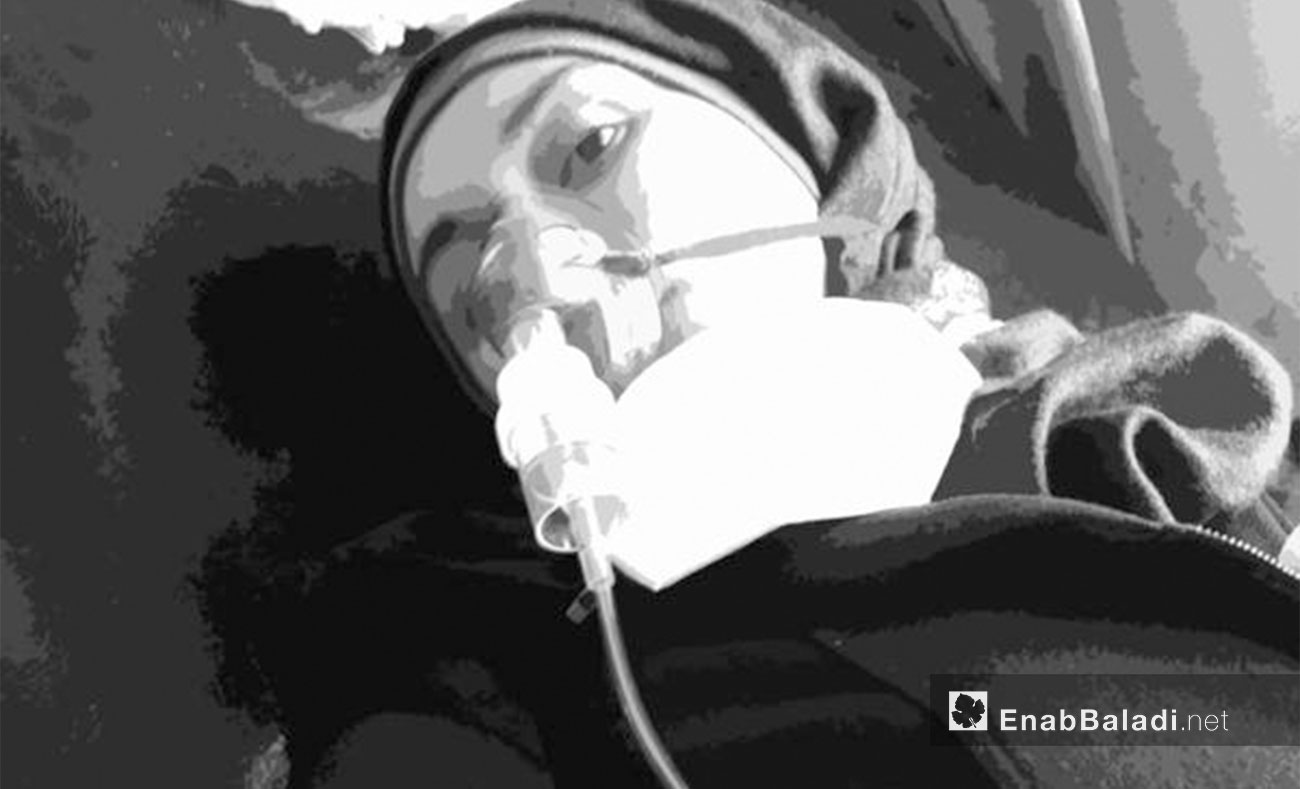
 Aya is a victim of the chemical attacks on the town of Khan Shaykhun in rural Idlib - April 2017 (Enab Baladi)
Aya is a victim of the chemical attacks on the town of Khan Shaykhun in rural Idlib - April 2017 (Enab Baladi)





 A
A
A
A
A
A

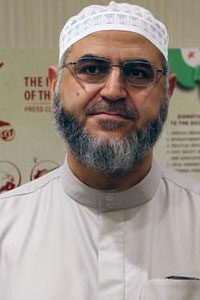


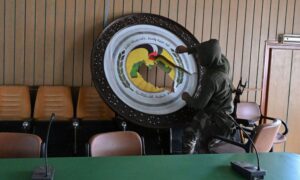

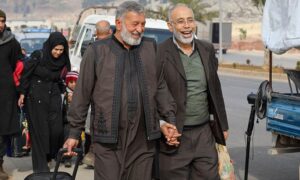


 More In-Depth
More In-Depth